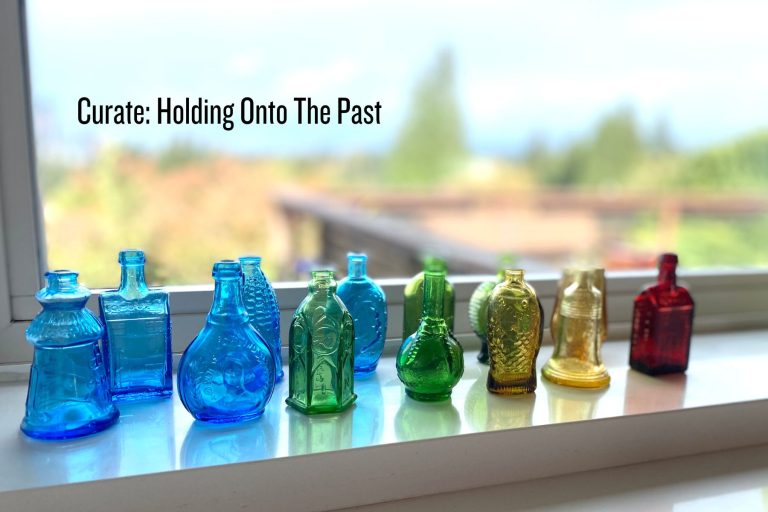Make Time To Transition
As an Amazon Associate and member of other affiliate programs, I earn from qualifying purchases.
Happy New Year! I do enjoy the first few days of the new year when the runway ahead feels long, with plenty of time to plan. Our house always feels especially clean and minimalist at this time because I have struck the Christmas set by New Year’s Day at the latest, creating the perfect canvas for contemplating what is to come in the new year. There is usually at least a couple of transitions on the horizon, some affecting only a few of my people and others with wide-ranging impacts. In 2022 for instance, I will have one kid transitioning out of college into life as an adult, another graduating from high school and heading to college in the Fall, my Dad potentially moving out of his house and into a retirement community and the right behind him my Aunt and Uncle. There is a lot to think about and plan for; I’m getting started now so I’m not overwhelmed later!
Transitions can be scary to think about, whether it’s the amount of work associated with the transition itself or the emotional minefield it represents. But transitions can also be cathartic; an opportunity to work through some emotional baggage and start a new phase of life refreshed and energized. There are many kinds of life transitions that require some forethought and planning, but a few big ones come to mind: kids moving out, parents downsizing and just plain old moving. I’m anticipating 2 out of these big 3 happening in my family this year and wanted to share my method for approaching each with a plan of action.
kids moving out
When your kid leaves home they leave multiple voids in their wake; their physical presence in the home, the audible soundtrack as they orbit the family and finally the void of their empty room. These voids vary in size and intensity depending on the kid and how much time they spent with with the family in the years preceding the transition. When my oldest left for college it was not super-noticeable. He had been in full nest-soiler mode the year prior to leaving and we really didn’t see him much. When he left we just went on with our busy live and before we knew it he was home for Thanksgiving. When my daughter left it was completely different. We had just been through eighteen months of pandemic living and so had spent a lot of time all together. It was really emotional. Plus she’s the most talkative of my three and so the house felt measurably quieter in her absence. Both kids left voids that were different in size and intensity. However, they did have one thing in common: heaps of ‘stuff’ (I’m euphemizing) that filled up the ‘void’ of their childhood bedrooms!
This year will mark 2 big transitions for our family unit. Our third and youngest will graduate from high school in June and leave for college in August. And our son will graduate from college (!!!) His plan is to land a job and move in with friends in LA, far away from us in Seattle. Any visit home will be short, likely a week at the most so really he is done living in our house. It is really easy to just close the door to that bedroom and preserve it in it’s current state – replete with his childhood possessions and memories. But there is also an opportunity to use that space differently, transition it to be more useable and less of a museum of the past. I advocate for a balanced approach to this sort of transition, leaving the room as is but maybe taking a first pass at cleaning it out and de-cluttering. It’s highly likely that many of the items your grown child has left behind they will never use (or wear) again. You don’t have to do a complete overhaul but a gentle culling is in order. My plan is to partner with my son virtually as I go through his stuff, noting what he wants to keep for himself that will eventually make its way to his own home someday. There is an alternative path for those who have a more pressing need for space in their home. You may need a dedicated Home Office or a Gym, a Studio or a Guest Room. If this is the case I would adopt a faster timeline for the de-clutter and begin the transformation. It may be hard for you and/or your kid but there are ways to make them feel at home when they are visiting without preserving the shrine of their childhood bedroom.
If you are approaching a milestone like this take the time now to start thinking about how to plan for the space transition and how to pace it. The major steps are:
-
De-Clutter
-
Define new use
-
Create Action Timeline
The transition to college presents an opportunity to ease into Step 1 by breaking it into small chunks. De-Cluttering is the biggest and hardest of the 3 steps but remember you can start that at any time, and the ideal time to attack is when your kid is away at school and not barking at you to stay out of their room! If the prospect feels daunting you can always bring in help, this right up a Professional Organizer’s alley!
parents downsizing
This transition is usually a whopper, both in scope and emotional energy. For those reasons many people avoid it until they no longer can, which amplifies the stress and anxiety for all involved parties. Some folks never do downsize and remain in their family home for the rest of their lives. The kids then have a monster project facing them in the wake of their parents’ death. I highly recommend going through a Downsizing De-Clutter while your parents are still alive, whether they are actually downsizing to a smaller home/retirement community or not. The time you spend now will pay off in spades later, and it presents an opportunity to connect with your parent(s), share memories and get everyone into a healthy mindset around the concept of end of life.
My mother passed away several years ago and in the last 3 years of her life she was dealing with the effects of a stroke. At one point she had moved into an Assisted Living situation and my dad was still in their house. His plan was to move to the retirement community where she was as soon as an apartment opened up so we started to go through their things in anticipation of a much smaller living space. It was hard at first but my dad and I spent a few hours each weekend, tackling one room at a time and at the end of each session I would head to visit my mom and share whatever we had gone through that day, including pictures, letters and other memorabilia. I treasure that time I spent with her – not realizing that I would lose her less than a year later. Through the process I got a good sense of what was now important to each of my parents, and what wasn’t. As it turned out, when my mom died 8 months later my dad decided to stay in the house. But the time we spent de-cluttering didn’t feel wasted, rather the opposite – my dad is living in a more streamlined space and we have a leg up when he is eventually ready to move. When that happens most of the decisions to be made about what to keep will be furniture-related. I didn’t plan for how the whole process unfolded but I’m so glad it did the way it did because it made clear to me a method for down-sizing that optimized for bit vs. batch, parent/child relationship and expedience at the point of the actual move itself. I’m now going through a similar cull process with my Aunt and Uncle, who don’t have children and have accumulated a lot of things over the course of their lifetime together. So far it’s working out beautifully!
Obviously the method of taking things in smaller chunks is easier to execute if your parents live locally. But even if they don’t you can prioritize visits to see them and carve out time while you are there to go through a room or two. If they are reluctant to get rid of anything you can at least categorize their things by priority, making lists of what will stay with them vs go if/when the times comes that they need to move on to a new home.
Just like any other de-cluttering project, the approach for down-sizing should follow the same best-practice method with a couple of tweaks:
-
Identify what your parents may not need in their new space (e.g. will they still entertain? Do they need all the stuff they have related to entertaining?) and what is still really important to them (Books? Art? Current hobbies? etc.)
-
Sort belongings into categories: Keep/Use, Donate/gift, Trash.
-
Remove trash & donations, organize items in the ‘Keep’ category to optimize for their accessibility and use.
The key to this being a pleasurable endeavor vs. a pain-in-the-ass chore is attacking it in small chunks, which means planning ahead and starting when the need is not urgent. If you find yourself in the opposite situation of having to execute a downsize project quickly I highly recommend enlisting the help of a Professional Organizer. That person will help you move quickly and also provide an emotional buffer-zone for you as you navigate what can be pretty tricky and certainly stressful transition.
Life Transitions can be big and hairy, but they don’t have to be stressful and awful – you can mitigate a lot of the emotional weight and stress by planning ahead, starting early and/or enlisting the services of a professional. That’s certainly going to be my approach as I attack 2022 with the vigor born of a new year fresh with opportunity. Bring on the transitions, I’m ready! Happy New Year!









Method Seattle Comment Policy
We welcome relevant and respectful comments. Off-topic comments may be removed.